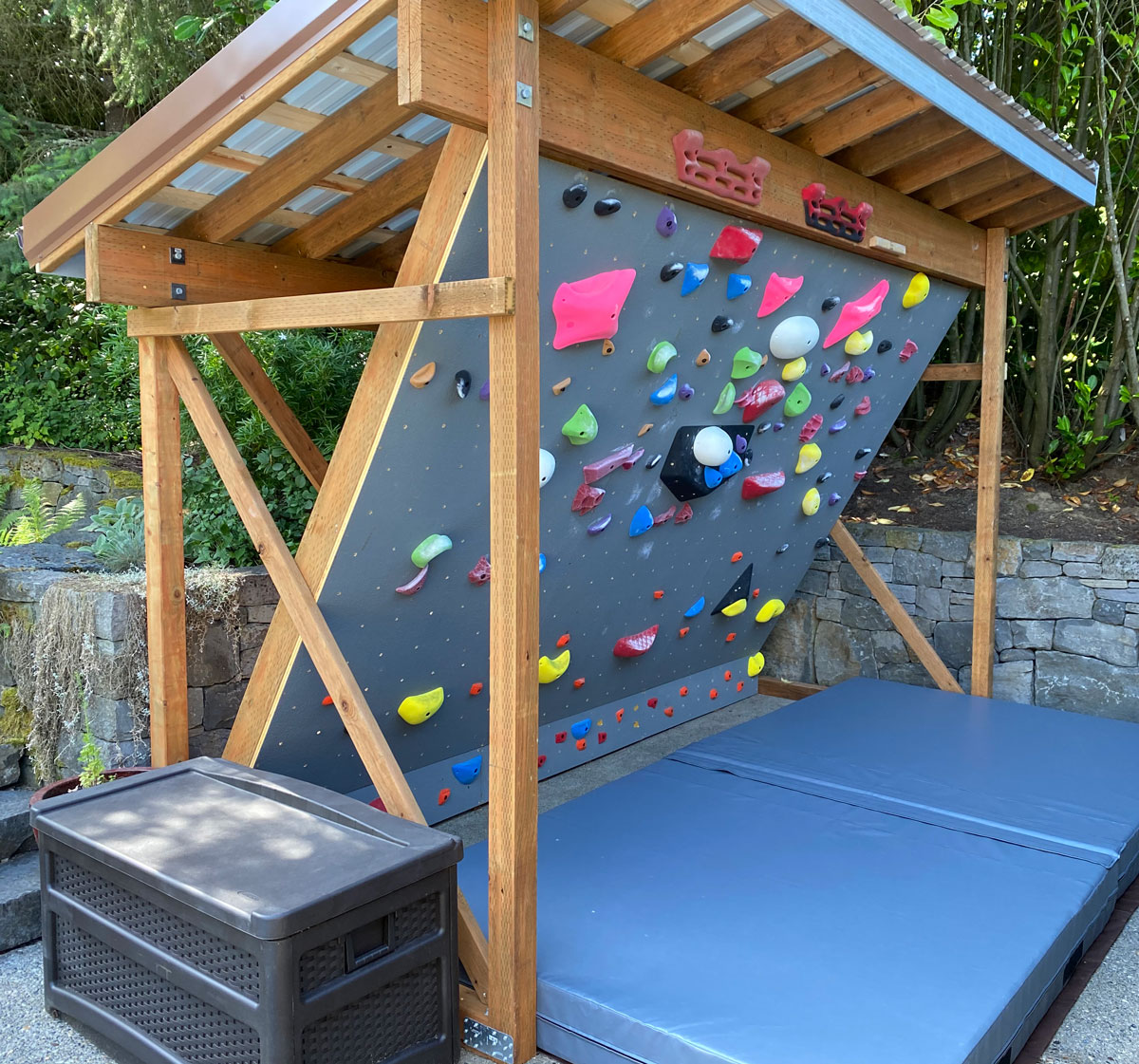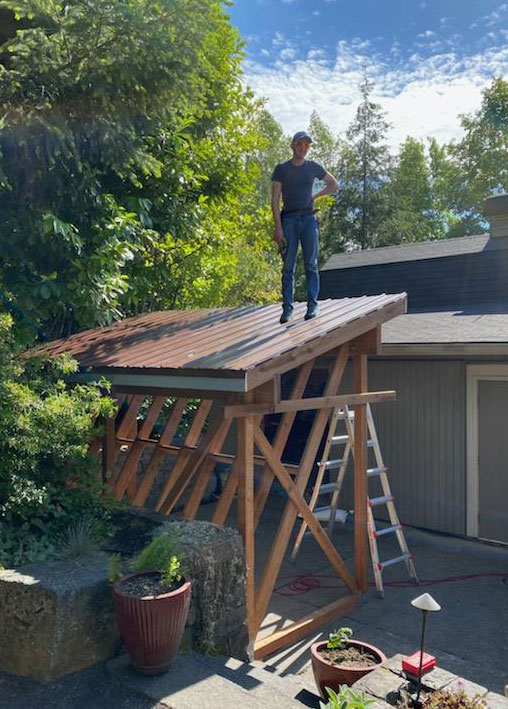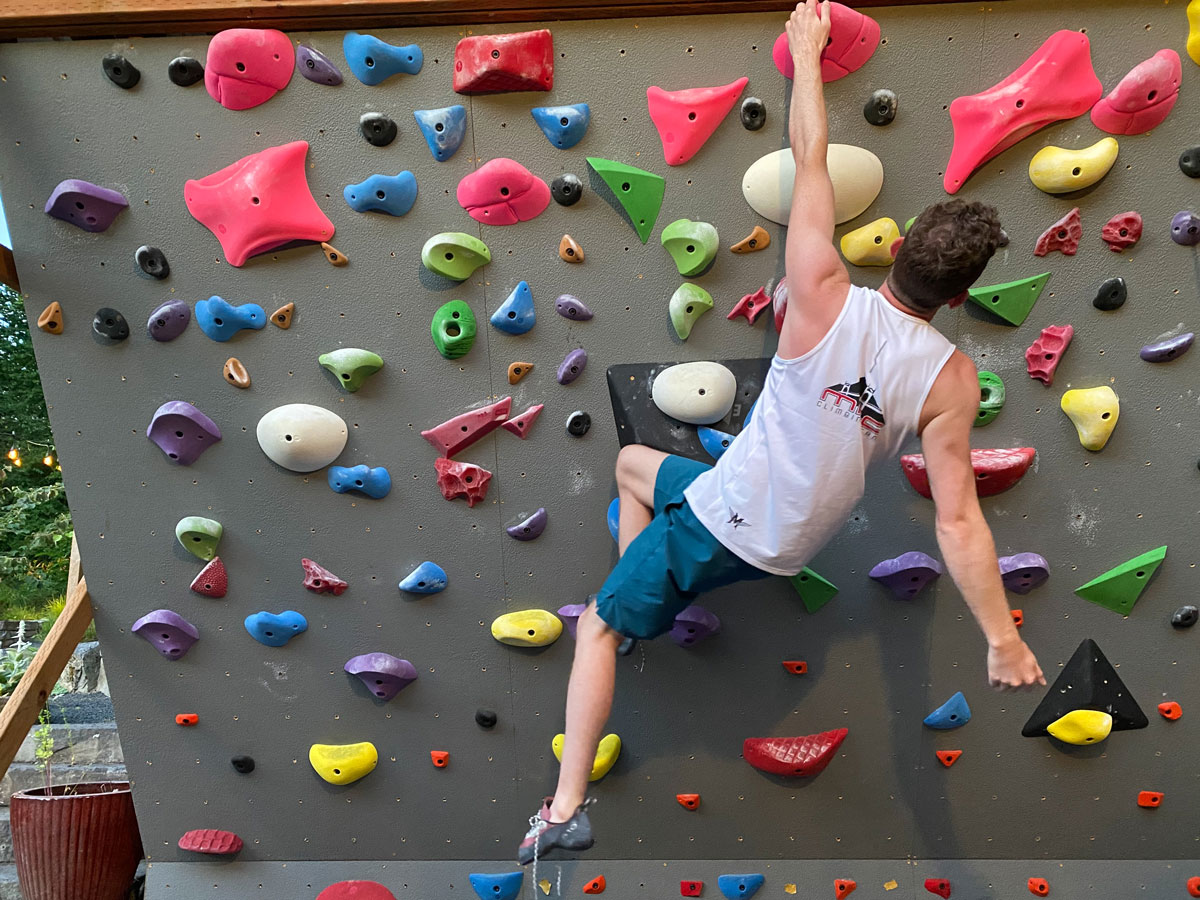This homeall is well suited to endure the varying climate of the PNW. Chi Harris decked out his standard training wall with a roof and gutters for weather protection.

When did you build your wall? Was it a COVID baby?
May 31 – June 4, 2020. I hadn’t put much thought into building a home wall prior to the pandemic. Going to the gym or climbing outside was sufficient. With the outlook on gym operations looking to be in limbo through the end of this year the timing just seemed right. Much of the inspiration for the design of the wall came from wanting a wall that could survive the wet Pacific Northwest winters, while looking ascetically pleasing. I drew on my experience framing homes when it came to design. I’ve always loved the beauty of symmetry and uniform spacing that comes with nicely crafted framing. The design is original in nature and I didn’t actually look at any other home walls before starting the build.
How long did it take you to build and what did that time look like?
Five days. Work days on the wall started at 9am and usually went until around 6pm with a lunch break somewhere in the middle. Being laid-off of work during this time allowed me to work on the wall for 5 days straight without interruption. The first couple days of work were the most exciting because this is when the majority of the framing goes into place. Once the framing is up, more of the detail work begins and visually feels like slower progress between days. I cannot think of any lowlights in the building process.
Not including holds and padding, how much did it cost you to build? Any surprises there?
$1500 materials. When I was 15 my granddad and I built a house together from scratch. Drawing on that experience I was able to accurately estimate the cost beforehand. I created a good building materials list from my blueprints I drew up, and priced out materials before diving into the project. The most expensive individual material were, surprisingly, the t-nuts. Those little guys add up fast. After that the plywood panels and 4”x 6”x 12’ piece of lumber that created the foundational beam for the back of the wall was fairly spendy.
What was your primary incentive for the wall? Did anything in particular inspire your wall design?
I was inspired to build an outdoor homewall that could survive the wet climate in the Pacific Northwest.

What was the most difficult aspect of the design and build?
Keeping the framing square through each phase of the build was very time consuming. This started with leveling the base of the structure with custom cut 2×4 shims and continued with making sure we had accurate rafter spacing for the wall rafters and roof rafters
What would you do differently?
I would extend the gable of the roof 6 inches wider on each side of the structure for more weather protection.
Did you make any mistakes along the way or choose to re-do any aspects?
Small mistakes were made, but caught and remedied before getting too deep into the project. The most time consuming was on day 3: I had to go and adjust a decent number of wall studs to make sure they were on 16” centers. Being off by even 1/8 or ¼ of an inch adds up and can cause conflicts with t-nut placement on the plywood. This was a couple hours of back peddling.
What is your favorite aspect?
My favorite aspect of the structure is it’s the architecture. It’s simply pleasing to look at the clean lines and nearly perfect spacing of the framing.

How often do you use the wall? Do you think you’ll still use it as much when all of the gyms open back up?
The wall gets used about 3 days a week for a couple hours. Time on the wall will diminish once the rain returns to Portland in October. Similarly, when gyms feel safe to return to it will probably see less use. However, there is always something special about having a home wall session with your friends and not having to share the space with anyone else.
Any words of wisdom to aspiring homewallers?
Measure, measure, measure! Invest in a tape measure, level, carpenter square, and speed square. All can be had for less than $50 total and will make your life so much easier and less frustrating when it comes time to hang your plywood panels.








